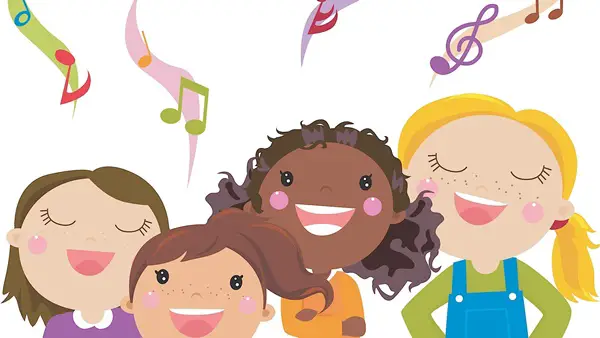Do you always feel depressed every time you learn English because it’s so dry and boring? So why not make it more exciting and attractive to you with a simple and more effective method? Learning English through songs is one of the fastest, most effective, and interesting ways to master communication that many people have successfully applied, especially beginners.
Three Basic Steps Of Learning English Through Songs
Step 1: Select simple English songs as your favorite ones
If you love a song, you will hear it a lot without being bored; otherwise, it will be boring and easy to give up. Once you have chosen a favorite song, the second factor needs to be ensured that the song must be clear and straightforward with simple sentences, grammar as well as content. For beginners, this is extremely important.
Step 2: Read thoroughly to understand the lyrics
This step does not require you to translate all the words into your language correctly; however, grasp what the song is mainly about. Note that this method of studying English does not apply to Rap music because there are slang words that are not commonly used in everyday English communication.
Step 3: Pick a few new words or strange phrases
Next, choose a few new words or phrases that you want to know the meaning so that you will be able to understand precisely the content of the English song. The dictionary will be a useful friend in this case. Not only can you easily find the meaning of the word, but the phonetic transcription also helps you pronounce the word correctly.
Step 4: Repeat the lyrics in the song you like
Repeating a sentence in your favorite song related to a new word or a strange phrase will help you remember those words faster and longer than the words you read somewhere in the book or notebook. Music associated with studying always helps us learn better in this case.
So, to expand your vocabulary effectively and quickly, listening to your favorite English songs many times is of great importance. You will feel your vocabulary and communication ability quicky increasing without taking too much time to learn English as before.

Why Is It Effective To Learn English Through Songs?
Listening to music helps you get familiar with difficult titles in English, such as attachment or intonation. The characteristics of the songs are vibrant melodies so we can listen and sing along to practice both inflection and intonation in sentences. If you practice phonics in a phonetic class, you may even want to throw away the book a few times. The good thing here is that the song helps us to practice phonics interestingly, and therefore, the effect will undoubtedly be much higher.
According to proven psychological studies, the human brain can remember images very well. Therefore, when learning English through songs, we should take advantage of this ability by finding Karaoke videos with subtitles below to practice. Not to mention the fact that if you can find videos with the images of your favorite singer, it will become much better. You shouldn’t look for Audio files or Video files that only have sound on YouTube because they will not have images.

For learning English through songs effectively, one must understand the content of the song and the pronunciation of each word. Therefore, before practicing singing, you should look up the dictionary to understand the meaning of all the words and the pronunciation of those words. The more new words you don’t know, the more words you’ll learn. This is a great way to learn vocabulary. You don’t learn vocabulary individually but rather in a specific context; therefore, you are also learning grammar.
Moreover, learning English through songs also helps you get the rules for linking, swallowing words, reducing the sound, etc. when speaking quickly.
However, learning English through songs has a limitation: phonetics, intonation may not be the same as daily communication. To proficiently improve your listening skills, you should listen to more conversations, VOA, BBC, etc.

For example, through the song “Just a dream” of Nelly, you can learn something as following:
– “thinkin” is a shortened form of thinking. Actually, when communicating, people only speak it as “thinkin”, especially when speaking fast.
– The phenomenon of linking words and swallowing sounds in English:
“I was thinkin ’bout her
I’m thinkin ’bout me
I’m thinkin ’bout us where we gonna be
Open my eyes, yeah; it was only just a dream
So I traveled back, down that road”
• In the above case, the “a” in “about” is a weak sound, so it is swallowed
• Gonna = going to
• There is a link between: waz_only just_a dream; down_at road
• There is a damping sound: that => at
In English, you will encounter a lot of the phenomenon of sound reduction, both in songs, newsletters, and daily conversations, often in her, him, them, etc. (govern_em, them => em).
There is also the phenomenon of the voiced sound’s domination over the voiceless sound. For example: want to = wanna, going to = gonna, in this case, the “t” is the voiceless sound, “n” is the voiced sound, when the reading is quick, the “n” sound dominates the “t” sound so “want to” is usually read wanna, etc. There will be more sentence structures that you will recognize if you listen and watch the video songs.
To practice learning English with songs effectively, we highly recommend you refer to the following songs:
- Until you
- Cry on my shoulder
- My love
- Baby
- Just give me a reason
- Apologize
- Because you live
- The day you went away
- Roar
- Beautiful In White
- From Sarah with love
- Happy New Year
- I cry
- You raise me up
- One time
Through the above writing, we have already known how to learn English through songs. Please apply to see how it works! We hope you will achieve significant results thanks to this method. Thank you for reading and good luck!







